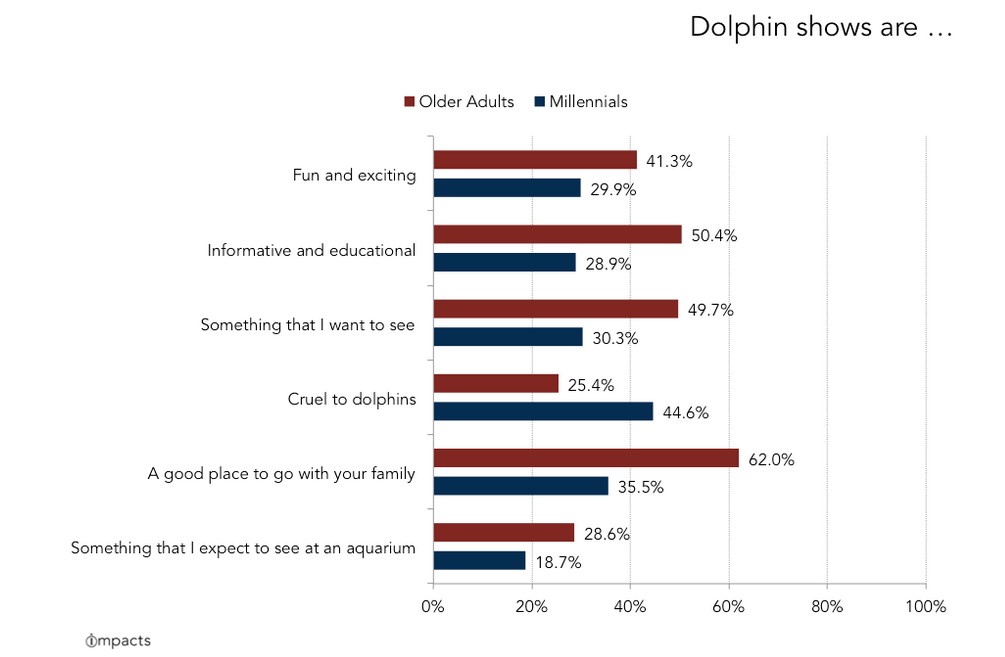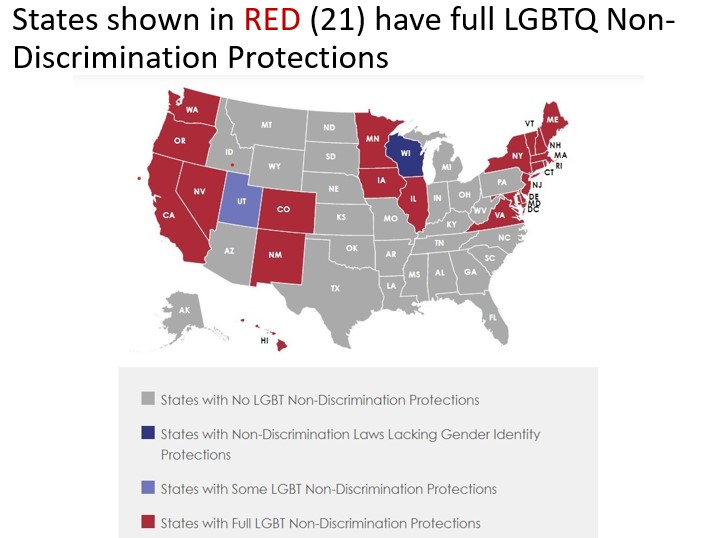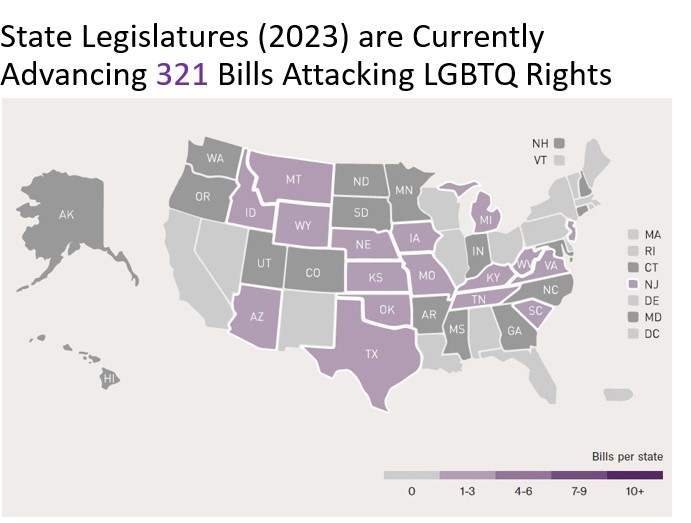
Forgive me for being biased, but I think Museums Advocacy Day is one of The Best Museum Events in the US every year. What’s not to like about hundreds of people descending on the Capitol to tell their representatives about the awesomeness that is museums?
Museums Advocacy Day is for the most part relentlessly focused on immediate, practical issues. This year’s two “asks” are $65.5 million in FY 2024 funding for the IMLS Office of Museum Services (which would be a much needed increase of at least $10 million), and support for bipartisan bills expected to be introduced in the Senate and the House to renew and expand the universal charitable tax deduction.
But now and again I have the opportunity to contribute a futurist perspective to the program. This year I partnered with Paul Hammond, Executive Director of the Colorado Railroad Museum, and Stephanie Shapiro, Managing Director of Environment and Culture Partners, to present a session on emerging issues in legislation—concerns that are beginning to impact our sector and our lives.
Jump to:
- Climate Legislation and Policy
- LGBTQ+ Rights and Equality
- The Far Horizons: Faint Signals of Change:
The Role of Foresight in Advocacy
Foresight plays an important role in advocacy. By watching early signals in the news we can spot legislation that might:
- Present windows for museum advocacy in the future
- Have practical implications for museums right now and in the near future
- Serve as a windsock for public opinion, measuring cultural and political trends
Regarding future advocacy, there are growing calls for regulation of artificial intelligence and its applications, including AI image generators that gather their underlying data by scraping billions of images from across the web in order to create new content. Artists are up in arms because these AI generators are scraping work from the web, without permission, mimicking artists’ styles and deploying the resulting images in ways that undercut artists’ ability to generate their own income. (Among the artists most concerned about this misuse are illustrators, animators, and cartoonists.) Of potential concern for museums: Do these massive scrapes also capture museums’ digital collections? In the past decade, we’ve seen a huge increase in the number of museums sharing high-res copies of works in their collections for free via the web, with creative commons licenses that encourage adaptation and reuse, as a way to increase access to their content and fuel creativity. Foster human artists and makers is a good thing, but do museums want to provide fuel for AI that may damage the arts economy overall?
As to practical implications for museums themselves—at least nine state legislatures are trying to criminalize drag performances, in many cases penalizing both the performers and public-facing organizations that host such performances. Dozens of museums across the country have been hosting drag performances to support the LGBTQ+ community and foster tolerance and inclusion. Some such performances have already been disrupted by protests, threats of violence, or political pressure. Legislation could codify the suppression of LGBTQ+-oriented museum programming.
Lastly, here’s a windsock that may be an early signal of cultural attitudes. In the past few years, we’ve seen a small wave of legislation around the globe codifying the rights of non-human animals, for example:
- California Coastal Commission ban on the breeding of Orcas in captivity (2015)
- Canada’s Ending the Captivity of Whales and Dolphins (“Free Willy”) Act (2019)
- The UK Animal Welfare (“Sentience”) Act addressing the “welfare of animals as sentient beings,” including vertebrates, cephalopods, and decapod crustaceans. (2021)
- California Assembly Bill 1881 “Dogs and Cats Bill of Rights” (2022)
Few museums have been directly affected by such legislation (notably at least one aquarium in California), but this legislation reflects an underlying generational shift towards non-human animals. See, for example, this data from IMPACTS Experience

which shows that compared to older adults, millennials are much less likely to have positive attitudes toward dolphin shows, and more likely to see them as cruel. Is this a signal for more general shifts in attitudes and expectations regarding museums and their stewardship of living or once-living non-human animals? Zoos and aquariums aside, anyone who has worked in a natural history museum has fielded the “did you kill it?” question. Might there be a future in which stewardship of living entities and the remains of non-human animals is held to a higher legal and ethical bar?
Climate Legislation and Policy
With that foresight lens in place, Stephanie Shapiro presented an overview of emerging climate legislation and policy topics, with the current focus being on the Infrastructure Investment and Jobs Act (IIJA) and the Inflation Reduction Act (IRA) and their implications for museums. IIJA includes funding for energy-efficient materials upgrades to buildings owned and operated by 501(c)3 nonprofits, including museums. The Inflation Reduction Act, which commits to reducing US carbon emissions by 40 percent by 2030, makes it possible for nonprofits (including museums) to take advantage of tax benefits associated with owning solar electric generation systems.
As codes and policies expand to cover scope 1 emissions (owned sources), scope 2 (indirect emissions, for example, from purchased electricity) and scope 3 (indirect emissions that include sold products and business travel, for example), it behooves museums to measure and report on their own impact, and to be alert to “greenwashing”—environmental claims by providers of energy and other products and services that may not hold up to scrutiny.
Museums might also stay abreast of the federal data and resources regarding climate-related hazards, and the actions being taken to implement federal climate resilience policy, including Executive Order 14008 (Tackling the Climate Crisis), federal support for nature-based solutions, flood risk management standards, the National Initiative to Advance Building Codes, and federal climate adaptation plans.
What can we do now?
In the face of these regulatory and legislative developments, Stephanie’s advice is for museums to:
- Partner with your community: Meet with your utility, your neighbor, your higher ed institution, and local officials.
- Remain flexible with any carbon accounting and offset work.
- Consider your communication around being or becoming “net zero” and “carbon neutral.”
- Ensure you are a part of your community’s resilience plan.
Stephanie compiled this list of resources on climate legislation and policy you can download and share.
NOT WELCOME: LGBTQ+ Rights and Equality
Paul Hammond was up next, providing an overview of the current state of legislation protecting or attacking LGBTQ+ rights.
A foundational issue: As of 2023, only 21 states have laws on their books prohibiting people from discrimination on the basis of sexual orientation or gender identity in employment, housing, and public accommodations. This lack of protection is becoming a very real issue as so-called “culture wars” heat up in our society.
In the last few years, states have advanced a record number of bills that attack LGBTQ+ rights, especially those of transgender youth. Republican members of Congress introduced the Stop the Sexualization of Children Act of 2022, which would prohibit the use of federal funds “to develop, implement, facilitate, or fund any sexually oriented program, event, or literature for children under the age of 10, and for other purposes.” The US Supreme Court has indicated willingness to scrutinize current laws and rulings that apply to LGBTQ+ rights, particularly where these clash with individual views on religion.
Only 21 states have passed laws fully protecting people from LGBTQ+ discrimination on the basis of sexual orientation or gender identity in employment, housing, and public accommodations (see map, below).

Meanwhile, 321 bills attacking LGBTQ+ rights are being advanced in state legislatures (see map, below).

Some state legislatures are advancing bills that target transgender people, limit local protections, and allow the use of religion to discriminate.
What’s at stake in these legislative battles?
- Entertainment & free expression
- Gender identity protections
- Equality for nontraditional love & relationships
- Access to healthcare
- Civil rights
- Education policy
- Federal funding
- And, ultimately, core museum values
We should not underestimate the size of these effects. Restrictions on federal funding could be far-reaching—say, for instance, that funding was prohibited to organizations that offer programming with any kind of perceived sexual content. Perhaps most troubling is the potential impact on museums’ core values. Recognizing and celebrating diversity are part of what we do as museums. What will happen to this focus going forward?
What can we do now?
- In 2022, Congress passed the Respect for Marriage Act, which protects statutory recognition of interracial and same-sex marriages in the United States. While limited, it represents progress.
- There are currently no other pending bipartisan actions or legislation at the federal level regarding these issues. The Supreme Court will be considering cases where LGBTQ+ rights may conflict with religious beliefs, and the outcomes are uncertain.
- While all supporters of museums can and should be working to advocate within their individual states and also at the local level, it’s important to consider how our official legislative actions are consistent with identifiable institutional needs and objectives, particularly in areas where we can identify real threats.
Bottom line, this is an issue that has many arms and legs. The current trajectory of individual state legislatures suggests new conflicts are likely to arise that could directly impact museums, their stakeholders and staffs, and their programs and funding streams.
As a starting point, Paul suggests examining our own institutions’ attitudes and perceptions, especially regarding non-binary and transgender people, and recommends the following resources for museums supporting LGBTQ+ rights and equality:
- The AAM LGBTQ+ Alliance’s Welcoming Guidelines for Museums
- The AAM LGBTQ+ Alliance’s Transgender Inclusion Toolkit for Trans Individuals, Institutions, and Coworkers
- Interpreting Transgender Stories in Museums and Cultural Institutions
The Far Horizon: Faint Signals of Change
Lastly, I offered a few thoughts about three other emerging areas of concern. All prompt the sorts of “what if?” questions I love. What if these trends accelerate? What do these legislative rumblings suggest about the operating environment for museums in the future? The first of these questions concerns:
Censorship and Control
In the past couple of years, we’ve seen a wave of legislation targeting books, language, and behavior. This includes:
- 521 bills for anti-Critical-Race-Theory laws—including resolutions, executive statements, and other measures—introduced in local, state and federal government entities since September 2020.
- In 2022, Idaho bill 666 would have opened employees at schools, museums, and libraries to a maximum $1,000 fine and a year in jail for “disseminating material harmful to minors.” (Though the bill passed in the state house, the senate declined to bring it to a vote.)
- 2,532 instances of individual books being banned, affecting 1,648 unique book titles, between July 2021 and June 2022, according to PEN America’s Index of School Book Bans.
In a future of increased censorship, might museums be:
- Repositories for books and content banned from schools and libraries?
- Targets of legislation to suppress content?
Note both these things could be true.
Restitution and Reparations
Locally and nationally, America is grappling with the question of what is owed to descendants of people who were enslaved to build the wealth of this country.
- Reparations task forces have been empaneled in California, Vermont, Boston, Palm Springs.
- The San Francisco African American Reparations Advisory Committee has recommended reparations of $5m be paid to eligible recipients.
- Over 350 groups have urged members of the US House to back R. 40, which would establish a Commission to Study and Develop Reparations Proposals for African-Americans Act.
- Al Green, D-Texas, has introduced a slate of legislation to honor American slaves and their descendants. The “Conscience Agenda: Our Moral Imperative” includes expanding Slavery Remembrance Day, posthumously awarding a Congressional Gold Medal to people who were enslaved, renaming the Russell Senate Office Building, authorizing the Securities and Exchange Atonement Act, and establishing a national Department of Reconciliation.
In a future of legislatively mandated reparations, what might be museums’ role in:
- Restitution: return of objects or land
- Rehabilitative acts: services, resources, power-sharing
- Satisfaction: language, public apologies, memorials
Museums and Emergency Response
In this guest post, Melissa Russo, Director of the San Bernardino County Museum, explained that California’s Government Code 3100-3109 designates all public employees (including museum workers) as disaster service workers, as needed. Pressed into service during the pandemic, the museum’s curatorial, educational, security, and maintenance staff served as poll workers, drivers, and other critical support roles during the 2020 election, while others helped out at local hospitals and medical centers, and served as contact tracers.
Increasingly frequent climate emergencies are entailing museum response as well. This winter, the UK, faced with unprecedented low temperatures and soaring fuel costs, created a national network of “warm hubs” (including museums and libraries). Museums, in turn, have lobbied for government funding to help them with their heating costs. Here in the US, Phoenix, Miami-Dade County, and Los Angeles have created “offices of heat mitigation and response” and appointed Chief Heat Officers to deal with a future of extreme heat.
In a future of integrated response to public emergencies, including extremes of heat and cold, might we see:
- More mandated roles in emergency response for local, state, and federal museums?
- Funding (local, state, federal) tied to museums serving as part of a response network?
- Support for the energy costs of maintaining museum climate control?
Your turn! I would love to hear your observations, concerns, about emerging legislation. What do you see, worry about, or interpret as signs of hope? Please share in the comments section, below.
Skip over related stories to continue reading article







Comments